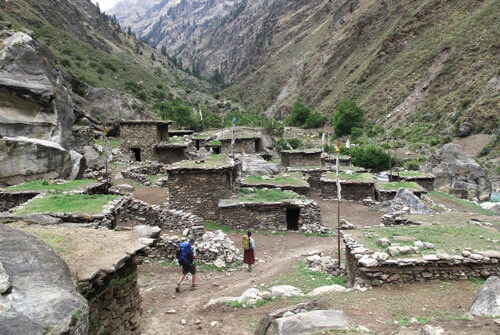Tourism Pays but it also costs:
This literally means the dual nature of tourism impact. There is no doubt that Tourism brings revenue assisting in a country's economic growth and development but it can also have adverse impacts. These may include environmental degradation, cultural erosion, increased cost of living, pollution, loss of traditional practices, etc.
So it is crucial to manage these adverse impacts responsibly and ensure that both the local community and the environment are preserved.
What can be done:
- Set limits on visitor numbers to fragile ecosystems or historic sites
- Establish advance booking system for popular attractions to manage crowds
- Offer discounts on off-season packages and special events during less busy periods
- Work with tour operators to create appealing off-peak packages
- Develop clear guidelines for visitors on minimal-impact travel.
- Create informative pamphlets, online courses, or brochures about local customs and protocol.
- Invest and Support local community that addresses tourism-related challenges
- Invest in sustainable infrastructure (e.g., renewable energy, waste management)
- Encourage hotels and resorts to adopt sustainable practices
- Showcase eco-certified businesses in tourism marketing materials
- Promote lesser-known destinations to reduce pressure on popular sites
- Create pleasing routes that connect multiple locations etc.
By implementing a combination of these strategies we can work towards more sustainable tourism models to benefit environmental conservation and community well-being.
Why Minimal Impact Travel – MIT:
Today the contamination of our Himalayan Environment combined with the critical impacts of climate change and the pre-existing environmental problems have intensified in recent years.
The growing number of visitors to the Himalayan landscapes has put considerable strain on the social and natural environment of the Himalayas.
The most critical environmental problem in the Himalayas is deforestation due to the high wood demands for construction and fuel. The lack of roads limits the transportation of other fuel alternatives and may eventually lead to the burning of wood.
Recently in Nepal mountainous regions, due to deforestation and unsystematic construction of roadways is leading to serious soil erosion. For the sake of luxury and promoting domestic tourism there are unmanaged and unplanned constructions. This has contributed to ample disasters and loss of biodiversity.
Littering in Nepal's mountainous regions has become a serious environmental hazard due to the lack of a systematic waste disposal system. The most concerning and evident litter problems are the expedition-style trekking and climbing groups. Conversely, the Nepali way of disposing of waste is simply throwing it anywhere.
With the increase in tourism over the years Nepal has faced serious congestion in popular destinations. This is causing serious problems in the physical environment leading to severe issues like littering, indiscreet human waste disposal, water contamination, wildlife disturbance, erosion, etc. Over the years all this has led to a matter which, over the counter is reducing the visitors' own enjoyment. The trekking and climbing destinations like the Everest Region, Annapurna Region, and Langtang Regions are witnessing these issues.
Climate Change:
Most significantly, the Himalayas in Nepal are facing the impacts of climate change. This Climate Change is greatly reshaping the trekking and climbing season patterns of Nepal. Annual temperatures are increasing, and extreme weather events are happening everywhere. Glaciers are shrinking, mountain regions are experiencing the risk of GLOF (Glacial Lake Outburst Floods).
For the past few years Nepal have been facing extreme natural events like floods, landslides, forest fires, water shortage, drought, etc which are direct results of Climate Change.
Minimum Impact Travel (MIT) has nine Elements and they are:
- Advance Planning and Preparation
- The trail Etiquette
- Camping Responsibly
- Waste Management
- Safeguarding Natural Integrity
- Respectful Travel Behavior
- Responsible Fire and Fuel Practices
- Wildlife Impacts
- Animal Welfare.
Advance Planning and Preparation:
You can avoid unnecessary impact on remote areas by thoroughly preparing for your trip. Consider how your choice will affect the local economy and environment. You can decide on travel style and eco-friendly options. Learn about the local history, regulations, and any regional concerns.
To avoid sensitive periods, trekkers can visit the area during off-season periods. Expect less and be ready for basic facilities so that you and future travelers can enjoy the pristine wilderness. Always pack reusable items and reduce any amount of potential trash. Take back your non-biodegradable wastes.
The Trail Etiquette:
Many of Nepal's Himalayan destinations have severely degraded leading to erosion. Travelers are to stick to the well-established trails and avoid creating any new shortcuts or switchbacks as this can lead to the formation of unwanted multiple trails. If possible avoid eroded areas entirely if there is an alternative route. When taking a break please move off the path so that other travelers can pass without trailing on new sections.
Travel quietly to ensure a pleasant experience for everyone. Avoid using Bluetooth speakers which can always be prevented by using earphones since no one is interested in your choice of music. That will avoid disturbance to others and as well the important wildlife of the region.
Practice trail courtesy. Give passing animals and porters space, especially on narrow trails and suspension bridges. Leave objects as you find them and avoid disturbing natural objects, cultural artifacts, etc. Keep trail litter-free. To minimize the impact of trekking poles, make sure the metal tip is well secured with rubber tips.
Camping Responsibly:
Camping is fun but choosing the appropriate location for camping helps preserve the fragile ecosystem and landscapes. Use designated campsites away from streams, lakes, and critical wildlife habitats. Use biodegradable soaps and avoid campfires as they contribute to deforestation and soil erosion.
When leaving camp make sure that it is clean and appealing to other campers. Be sensitive to local customs and practices and preserve cultural heritage. Take away all your non-biodegradable trash from the Himalayas as it won't decompose in high-altitude environments.
Waste Management:
With the rise in tourism and increased mobility, waste management has become a challenge for Nepal. In Nepal, proper waste disposal systems and recycling facilities remain limited or non-existent. The non-biodegradable wastes generated by the tourist in the Himalayas are not manageable locally and have to be taken out to Kathmandu to other locations. Some cannot be recycled even in Kathmandu and have to be exported to their country of origin.
So, here, traveling responsibly includes choosing local over-packaged goods. Dispose of waste properly, avoid single-use plastic bottles, and bring back your personal no-disposable items. Try not to consume bottled beverages including bottled beers since transporting them back to the city would be expensive.
Safeguarding Natural integrity:
‘Take only pictures, leave only footprints’ – this statement is very true. Leave natural sites and artifacts undisturbed and give other people the opportunity to experience the pristine beauty of the place. Leave everything in its natural state and leave the plants alone, instead take a close-up photo. Refrain from carving names or signs over trees and natural rocks as these actions may cause permanent harm.
Respectful Travel Behavior:
As said ‘treat others the way you want to be treated’ applies truly when it comes to MIT. Respect others' need for solitude, this will allow other people to enjoy the environment fully as equally as you would like to. Save your singing talents and Bluetooth speakers for the gathering and let the natural sound of the environment prevail.
Don't stay until late at night doing your stuff or playing cards in the teahouse dining halls as they may be the overnight sleeping spot for locals and hotel staff. If you are leaving early, minimize the noise or pack before night to avoid disturbing your fellow trekkers.
Be mindful of local customs and dress codes, especially when visiting religious sites or rural communities. Learn a few basic local phrases to show respect and appreciation for the country's culture.
Practice responsible photography by always asking permission before taking pictures. Remember that you're a guest in someone else's home and community.
Responsible Fire and Fuel Practices:
In Nepal's remote areas as well as in the remote Himalayas, the use of firewood as fuel is the biggest problem that impacts the environment. If you are camping you can reduce the use of firewood considering the use of kerosene or any other form of alternative. Campfires seem very essential when it comes to outdoor adventures but they directly impact deforestation.
In case of absolute necessity, you can keep the fire small being mindful of the surroundings. When finished, completely put out the fire with water and try restoring the area to its natural state arranging the ashes and leftover wood.
When you are on organized tours or treks, choose lodges that use fuel-efficient stoves, kerosene, or LPG gas for cooking or heating water. If you are in a big group, ordering a similar item will be more fuel-efficient than ordering individual food items. Carry water purification tablets or Steripen rather than relying on boiled water. To conserve fuel in remote areas, limit the frequency of hot showers and adjust your hygiene practices accordingly.
Wildlife Impacts:
Any outdoor adventure in Nepal brings you into contact with some native wildlife. It's important to note that many of the wild animals in Nepal's mountains are critically endangered or facing extinction. Species like the elusive snow leopard, the red panda, and the Himalayan black bear are under severe threat due to habitat loss and human activities.
By being mindful of our activities, we can contribute to the conservation of these vulnerable species for future generations. Travel quietly and respect the home and territory of the wildlife. Do not feed local wildlife as it can lead to other issues such as diseases and obesity.
Stay away from nesting and breeding grounds as these actions can provoke the defensive behavior of the parent animals. Minimize light pollution, don’t use led bulbs to decorate trees and shrubs as it will disrupt local wildlife. Drive responsibly in wildlife-protected areas and never ever buy animal products.
Flying helicopters over the Himalayan area have become a big issue for wildlife. The loud noise is disturbing to animals during sensitive periods like breeding seasons or winter hibernation. Helicopters can cause stress, disrupt their peacefulness, and even lead to nest abandonment in birds. This has become very concerning in Nepal which is a threat to already vulnerable species surviving in fragile mountain ecosystems.
Animal Welfare:
There is an urgent need for ethical practices to ensure the wellbeing of animals involved in tourism activities like mules, yaks, elephants, etc. Ethical treatment of animals is not just a moral obligation but also a practical necessity for sustaining the tourism industry.
Load-carrying animals must be well looked after with minimal load, adequate food, water, rest, and medical treatment. They should be handled with care and never subjected to abuse or excessive load. Avoid elephant safaris as these activities only contribute to the exploitation of these animals. In captivity, elephants in Chitwan National Park or Bardia National Park are deprived of their natural life. Avoid participating in any activities that exploit animals
Conclusion:
Besides these nine elements, MIT (Minimum Impact Travel) also covers responsible rafting, responsible birdwatching, responsible mountain biking, responsible overlanding, and porters' welfare.
Likewise, do check out the Importance of Porter in the Nepal Mountains.
Minimum Impact Travel (MIT) is an ethical tourism that aims to boost the positive outcomes of tourism for the environment and the local communities. It also considers the social, cultural, and economic impacts of tourism, and encourages tourists to be aware and responsible for their actions and choices.
MIT is very crucial for Nepal, as it can help the country to achieve its development goals while preserving and promoting its natural and cultural heritage. It can also help tourists to have a more enjoyable, meaningful, and rewarding travel experience.






